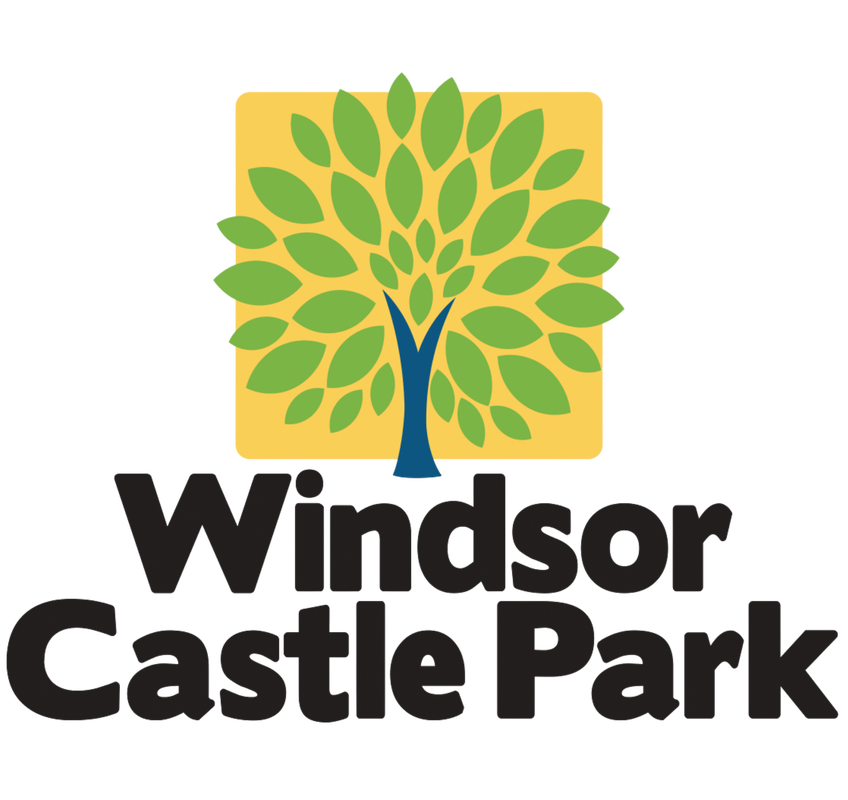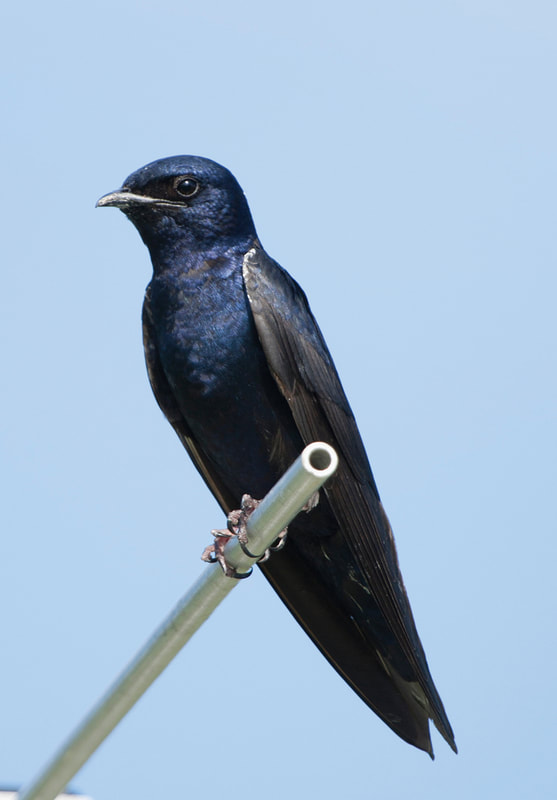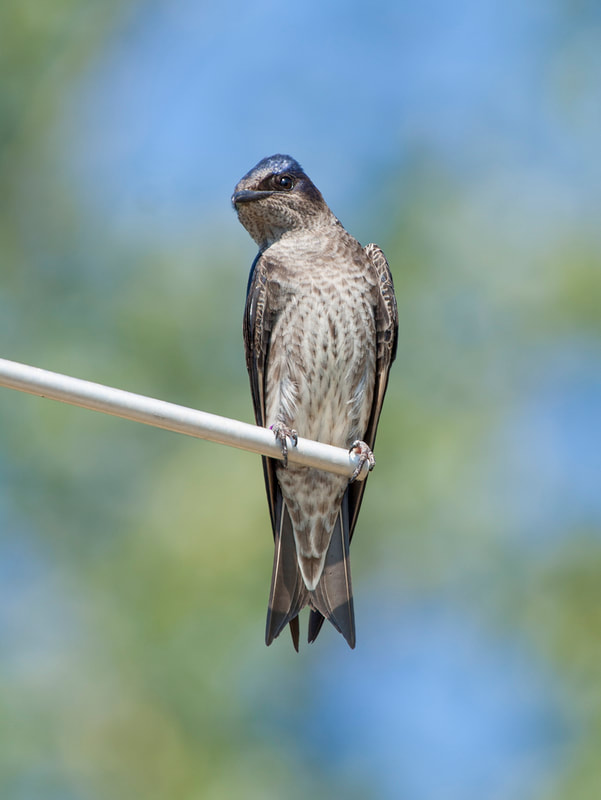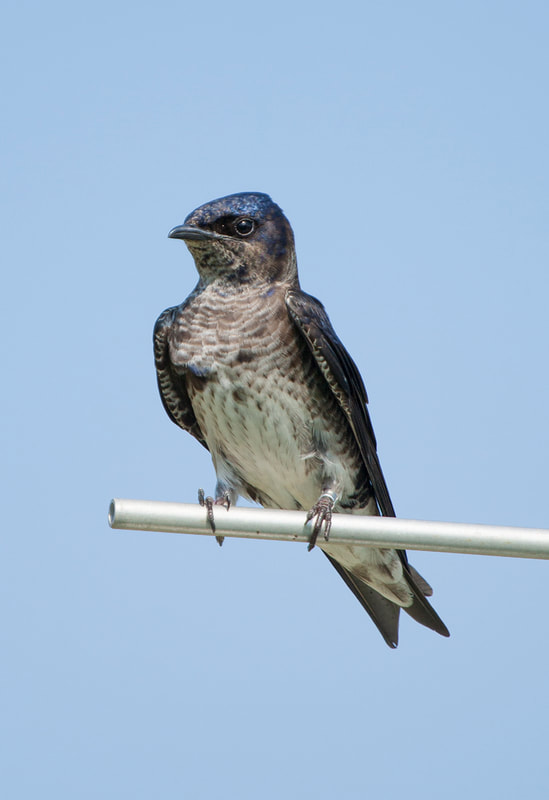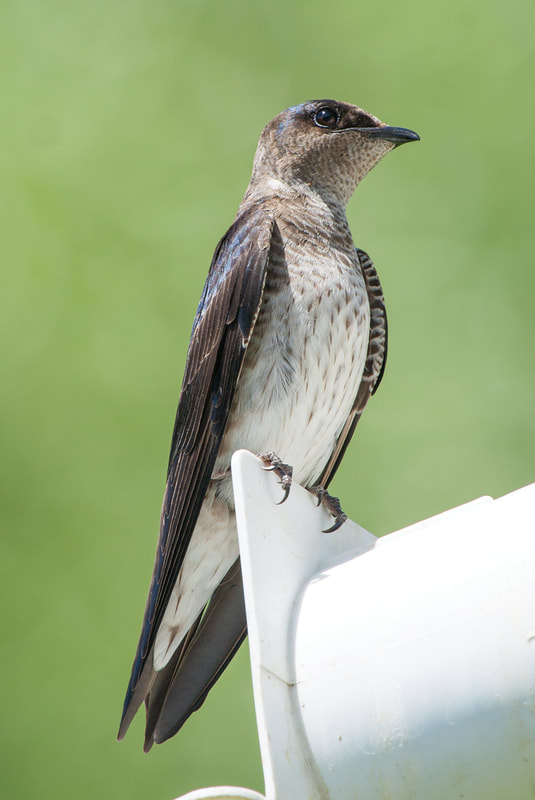Purple MartinsThanks to the Master Naturalist Historic Southside Chapter and the continued work in conservation and education, we have a new birdhouse in the park! You can find Purple Martin Birdhouse on the right side of the Historic Barnyard parking lot.
This page will tell you all about the Purple Martin, what they are, how to identify them, what makes this birdhouse special, when to expect them and more! |
What are Purple Martins?
Purple Martins are migratory songbirds and the largest member of the swallow family in North America. They are known for their aerial acrobatics, chattering song, insect-eating habits and their tolerance for humans.
Identification
- Their name comes from the iridescent purple feathers predominantly found on adult males.
- The females are duller in color with gray on their head and chest with a light lower belly.
- Females are usually the hardest to identify, but you can look for many solid-purple feathers on either their chins, throats, bellies or under tails.
- Purple Martins have "delayed plumage maturation," which means taking more than one year to acquire adult plumage.
- In the Purple Martin's case, the females take two years and the males take three years to reach their full adult plumage.
- Average Length: 7.5 inches
- Wingspan: 15-16 inches
Habitat
|
|
|
Migration
Purple Martin Timeline:
|
|
Nesting
|
|
|
Building the Birdhouse
|
The Virginia Master Naturalists Historic Southside Chapter constructed the birdhouse you see in Windsor Castle Park. You can watch the slideshow to see the project from start to finish!
A huge thank you to Don and Penny Ownings for constructing the Purple Martin house and spearheading this project. |
|
